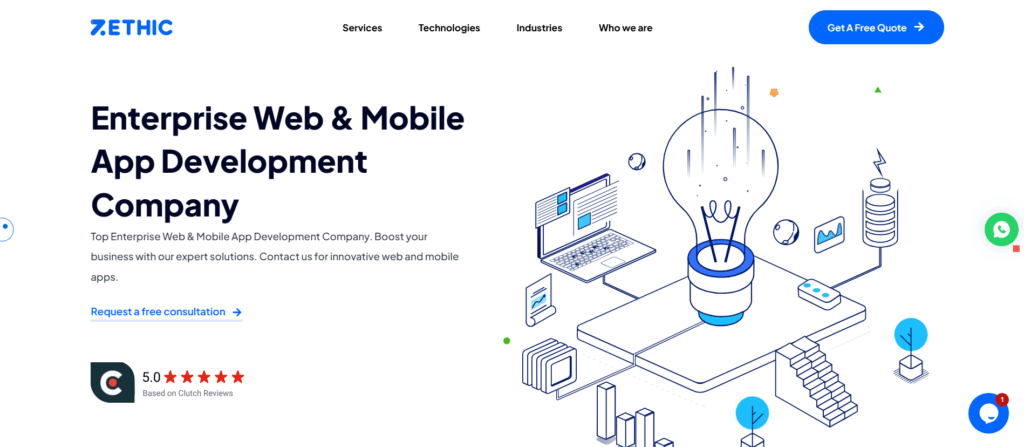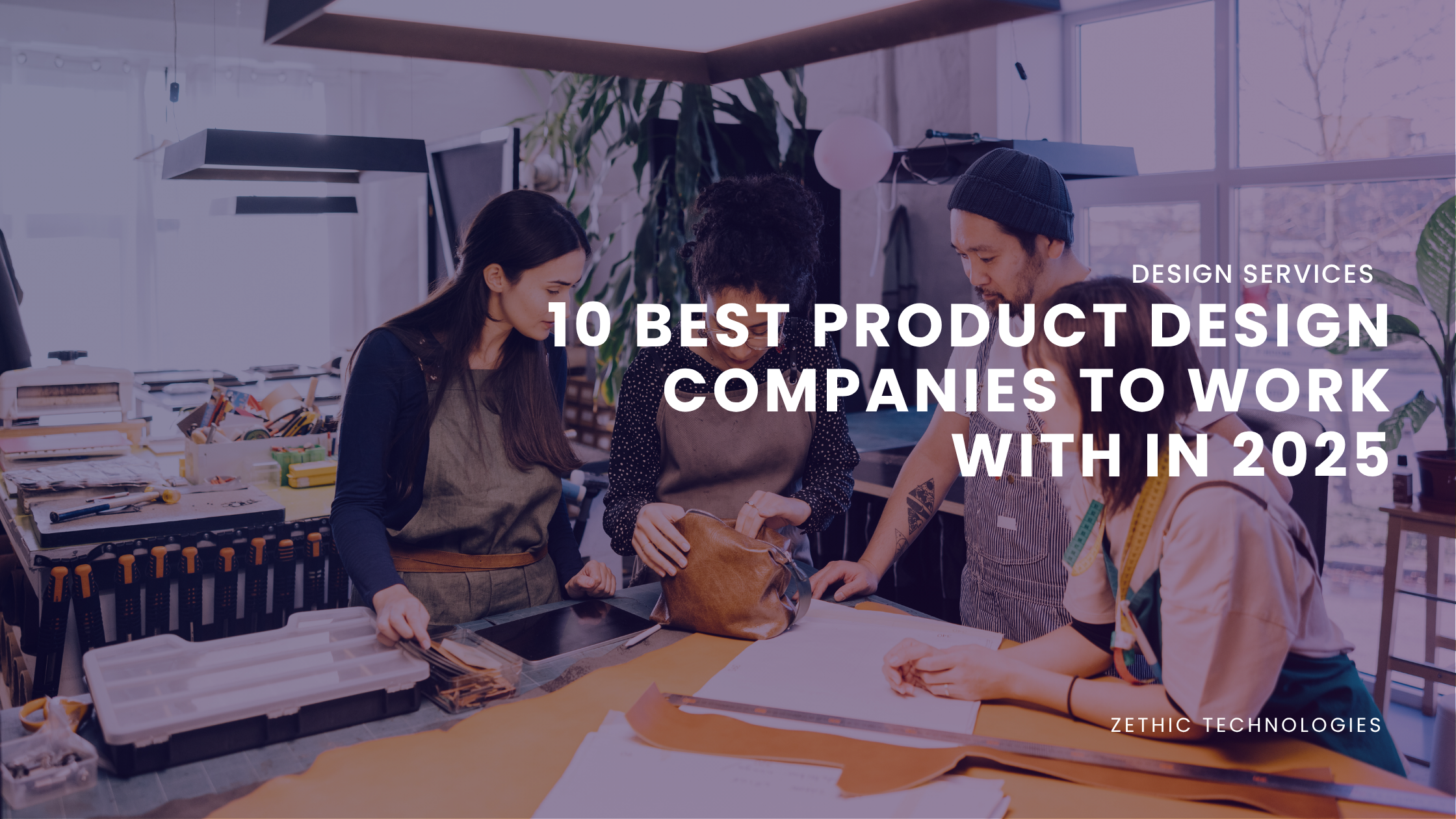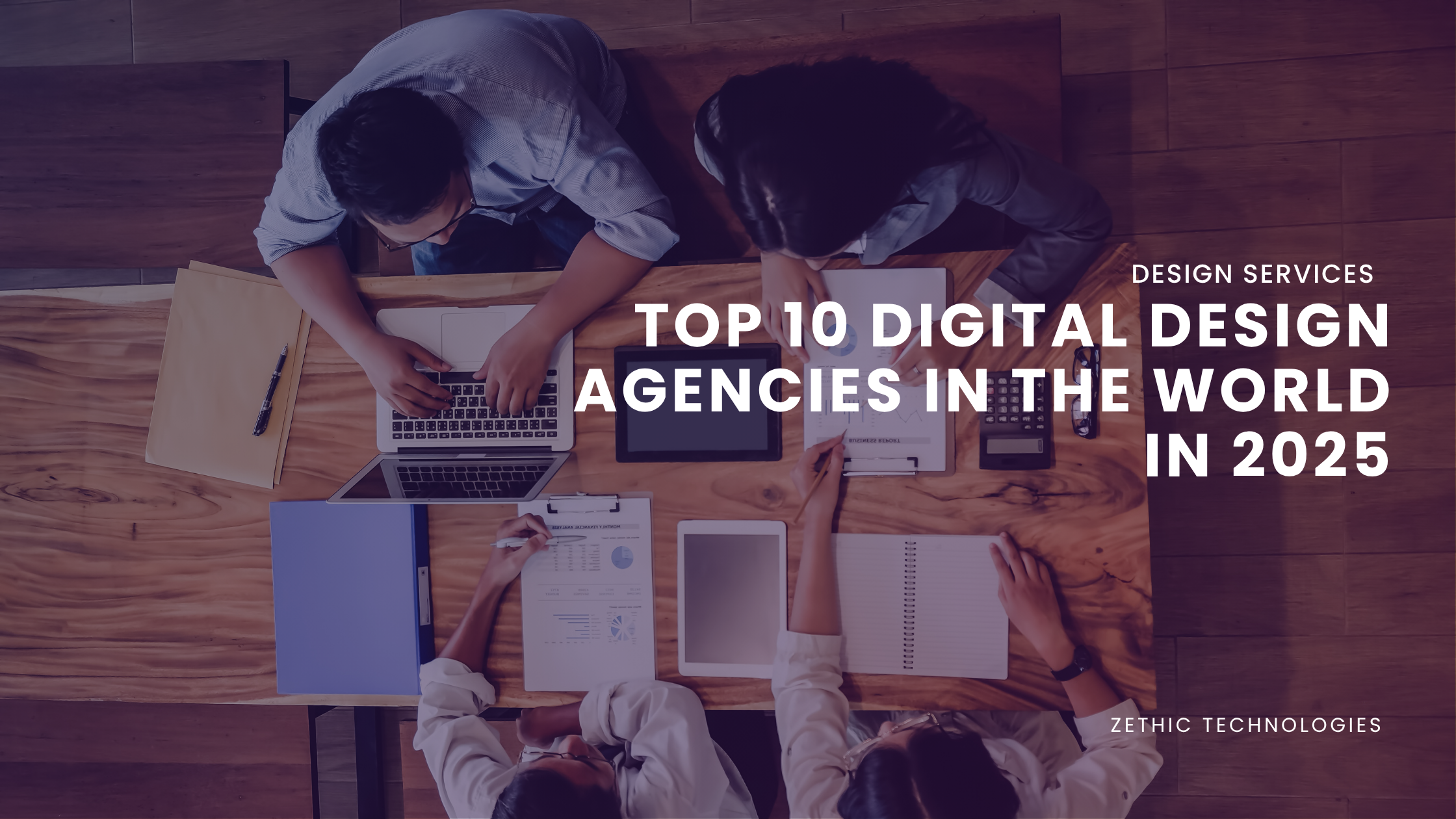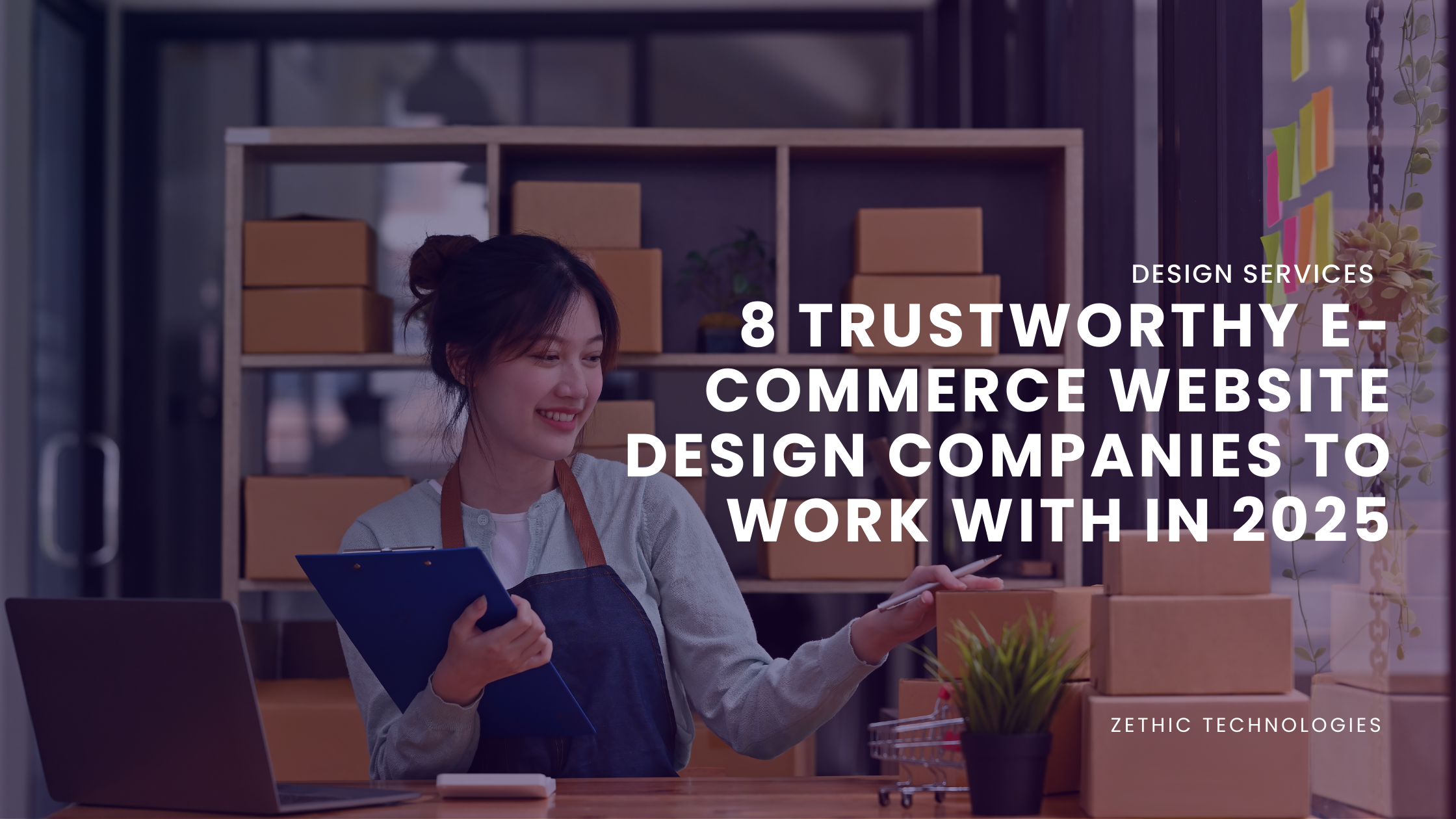Key Takeaways
- Product Design Companies must focus on outcomes, not just clean visuals, to truly impact business growth.
- 94% of first impressions depend on design, yet most agencies still ignore real user behavior.
- Fast design cycles without strategy often lead to surface-level fixes and deeper product issues later.
94% of first impressions are design-related — and after reviewing over 50 product design companies closely, I can tell you most of them are just… pretty portfolios with no product thinking. They’ll redesign your interface, throw in some animations, and completely miss the point of why users drop off in the first place.
So I dug deeper. I’ve researched, filtered, and shortlisted product design companies that actually get it. The ones who don’t just design for aesthetics, but for outcomes. These firms think like product owners, question assumptions, and aren’t afraid to say no to bad ideas. If you’re building something serious in 2025, start here.
10 Amazing Product Design Companies You Need To Check Out Before It’s Too Late
No one likes to say out loud, but most product design companies know how to win awards, not users. They’ll show you a slick Dribbble shot, maybe toss in a Behance link with lots of gradients, and call it a case study. But when does the product go live? Bounce rates stay high. Conversion stays low. And you’re left wondering if you paid for design or decoration.
So I have compiled a list of 10 best product design companies that you would like to work with:
1. Zethic
Founded in 2017, Zethic build digital products with precision, fast, intuitive, and built to solve real user problems. No fluff. No gimmicks. Just product design that works.

What sets them apart is their ability to marry deep product thinking with performance-driven design. Every screen they craft is built to reduce friction, improve engagement, and move users smoothly through key actions—whether it’s onboarding, search, checkout, or re-engagement.
They’ve partnered with names like Godrej, Decathlon, and Tata Power. This proves that they know how to handle both scale and complexity. But their real edge? Consistency. They don’t just design interfaces—they build user experiences that evolve with your product and business goals.
Ideal for
Startups, scale-ups, and product teams that want clean, scalable, and user-first product design—minus the noise.
What they bring
- UX that aligns with business goals
- Conversion-focused flows
- Mobile-first product thinking
- Fast-loading, responsive UI
- Clear, scalable design systems
- End-to-end design collaboration (research to final handoff)
2. R/GA
R/GA brings decades of experience to the table with a focus on end-to-end digital transformation. Their strength lies in merging strategy with design execution, often integrating brand, product, and marketing into one seamless digital experience. They approach product design from a macro lens—more system-level thinking than granular UI craft—which works well for enterprise-grade projects or multi-platform ecosystems.
Their USP is structure. R/GA is known for designing scalable product ecosystems that tie user experience directly to business objectives. While their design work isn’t always experimental or daring, it’s grounded, repeatable, and process-driven—ideal for organisations that want predictability and polish in high-stakes environments.
3. IDEO
IDEO is where design thinking practically originated, and they still carry that DNA into every project. Their process is deeply research-led, often spending significant time understanding user behavior before a single screen is drafted. This makes their work incredibly aligned with real-world needs, though sometimes slower to ship.
They excel at early-stage innovation and crafting user-first design solutions from scratch. If you’re building something new and undefined—an MVP in a complex space—IDEO brings frameworks that reduce chaos. Their strength isn’t just aesthetics; it’s turning ambiguity into clarity through design structure and purpose.
4. Clay
Clay is one of those product design agencies that has gained traction for a reason. They focus heavily on clean, minimal UI with a strong performance backbone. What separates them is how well they balance aesthetic with utility—there’s rarely anything unnecessary in their work, and that keeps users focused.
They’re especially good at building high-end, modern interfaces for SaaS and B2B products. Everything feels intentional—from typography to microinteractions. While they may not be as research-heavy as some others, their strength lies in execution, taking a clear brief and turning it into a polished, usable product.
5. Work & Co
Work & Co is structured like a product team, not an agency—and that’s their biggest strength. Designers, developers, and strategists sit together from day one, which helps reduce the usual misalignment between design and implementation. Their process is iterative and very feedback-driven.
They work well with companies that need full involvement from concept to launch, especially where design and engineering need to move in sync. Their style is minimal and functional, very utility-first. If you’re building a tool that people need to use daily, they understand how to keep things simple and effective.
6. Beyond
Beyond takes a strategy-first approach to product design. With over 10 years in the space, they’ve quietly built a reputation for merging product thinking with execution clarity. They’re not chasing the next design trend—they’re focused on building digital experiences that align with real business outcomes. That’s part of why their average client relationship lasts over 18 months, which says a lot in the agency world.
Their work tends to lean into systems thinking—how pages connect, how content adapts, and how users make decisions. They also bring strong usability standards across industries. If you’re building something complex, Beyond is one of the few product design firms that actually simplifies it without dumbing it down.
7. Ustwo
Ustwo has been building digital products since 2004—which means they’ve seen every trend, every buzzword, and still stayed focused on designing things that actually work. Over the last two decades, they’ve built over 150 products ranging from fintech apps to smart mobility platforms. What keeps them relevant is their ability to balance design intuition with measurable performance.
They bring a “less, but better” mindset. Instead of adding features, they strip back noise. Their design logic focuses on accessibility, user autonomy, and subtle behavioral nudges. That’s why their average user task success rate in tested products consistently hits 92% and above—a metric they track across sprints.
8. MetaLab
MetaLab has shipped over 250 digital products since launching in 2006. Known for its interface precision and startup-savvy thinking, they’ve carved a niche by delivering fast, clean design work without losing depth. Their approach suits fast-paced teams—they move fast but still build systems that scale.
One thing that stands out is their 4.8/5 average client satisfaction score across hundreds of projects—a rare consistency in an industry full of compromises. They’re not reinventing UX; they’re optimising it. From user flows to microcopy, every touchpoint is scrutinised. For growth-stage products that need momentum without quality dips, MetaLab performs reliably.
9. Eleken
Eleken is a UI/UX agency that’s refreshingly self-aware. They don’t try to do it all. Instead, they focus solely on SaaS product design, and it shows in their 90%+ client retention rate. Rather than bloated scopes, they operate on a flexible monthly model, plugging into product teams like an embedded unit.
They’ve designed over 130 SaaS dashboards, onboarding flows, and admin tools—each with a focus on clarity, task completion, and conversion. They skip the fluff and lean hard into functional minimalism. If you’re scaling and need a partner that thinks like a product designer, not a branding agency, Eleken fits that bill.
10. Fantasy
Fantasy might be the most creatively ambitious name on this list. Their design language is bolder, sharper, and built for products trying to disrupt—not blend in. In the last five years, they’ve reimagined over 100 product interfaces across AI, fintech, and consumer tech. Their approach is less about following UX conventions and more about redefining them.
That said, it’s not all show. Their designs have helped products see 25–40% improvements in task engagement and onboarding completion, according to reported case data. Fantasy is ideal if you’re not just redesigning, but repositioning. Their work feels cinematic, but underneath that is a strong product logic most users won’t even notice—but will feel.
4 Things No One Tells You When You Hire A Product Design Company
You’re paying for thinking, speed, empathy, decision-making, and sometimes, damage control. But here’s the kicker: most design firms won’t tell you what’s not included. They’ll sell you “user-first design” and “end-to-end workflows,” but skip the fine print.
So, before you sign that SOW and send your product roadmap over Slack, here are four things no one warns you about—but should.
1. Great Design Doesn’t Fix a Broken Product Strategy
Most founders believe design will “bring the product to life.” Here’s the truth: design can’t fix what the core product can’t deliver. If your business model is unclear, your offer is weak, or your positioning is confused—no amount of sleek UI will save it. A product design firm isn’t your product strategist (unless you’re paying top dollar and asking for that specifically). They’ll design what you give them. Garbage in, elegant garbage out.
2. They’ll Ask You Questions You’re Not Ready to Answer
Good designers don’t just start designing. They dig. And that digging will expose gaps in your thinking—like “what’s your north star metric?”, “who’s your primary user persona?”, or “what does success look like at onboarding?” If you don’t have solid answers, you’ll burn hours in workshops rethinking decisions you assumed were final. The catch? That’s a good thing. But it can feel uncomfortable if you expected a plug-and-play process.
3. Speed Comes at a Cost—And It’s Not Just Money
Every founder wants speed. “Can we ship this in 4 weeks?” Technically, yes. But here’s what no one tells you: the faster you move, the more assumptions you carry into the build. You’ll cut corners on research, feedback loops, and UX depth. You might get a clickable prototype—but not a validated one. The real cost isn’t in the design fee—it’s in the product decisions you didn’t have time to challenge.
4. You Might Still Need to Redesign Post-Launch (and That’s Normal)
No matter how good the agency is, your V1 won’t be perfect. Real users will break your flows, skip your CTAs, and misunderstand your navigation. That’s not failure—it’s feedback. But many founders panic, thinking the design firm messed up. Truth is, no amount of internal testing replaces real-world usage. What you’re buying isn’t a perfect product, but a learning-ready version 1. So yes, you’ll iterate again—and that’s part of doing it right.
The Takeaway Moment
What I’ve learned after studying dozens of firms is simple: the best design partners aren’t the loudest—they’re the ones asking the right questions. They don’t just design screens; they solve for outcomes. If you’re building in 2025, you don’t need a pretty prototype. You need a partner who thinks like a co-founder, understands friction, and designs for scale. Choose accordingly.
Too many products go live, then double back. Reworking flows, fixing poor UX, patching over design decisions made in a rush. Zethic doesn’t work like that. They slow down where it matters, so you don’t waste time later. Start your project right with Zethic. Book a call now.
FAQs
What is product design?
Product design is a technical and creative process aimed at conceiving and creating products that solve specific user problems while meeting business goals. It includes designing both physical and digital products with a focus on user experience, form, and function
How does product design differ from UX design?
UX design focuses mainly on the user’s experience and interaction with the product, while product design covers a broader scope including problem identification, user research, visual design, prototyping, testing, and overall product strategy
What are the key stages in the product design process?
Typical stages include idea generation, concept development, prototyping, user testing, and product launch, involving iterative design improvements based on user feedback
What methods are used to test product designs?
User testing methodologies vary and include qualitative, quantitative, behavioral, and attitudinal tests to evaluate usability and gather feedback for design improvements
What is a minimum viable product (MVP) in product design?
An MVP is a basic version of a product with core features designed to test the product concept and collect user feedback before fully developing the final product




